1 Layout CR Production up to Tinplate Processing

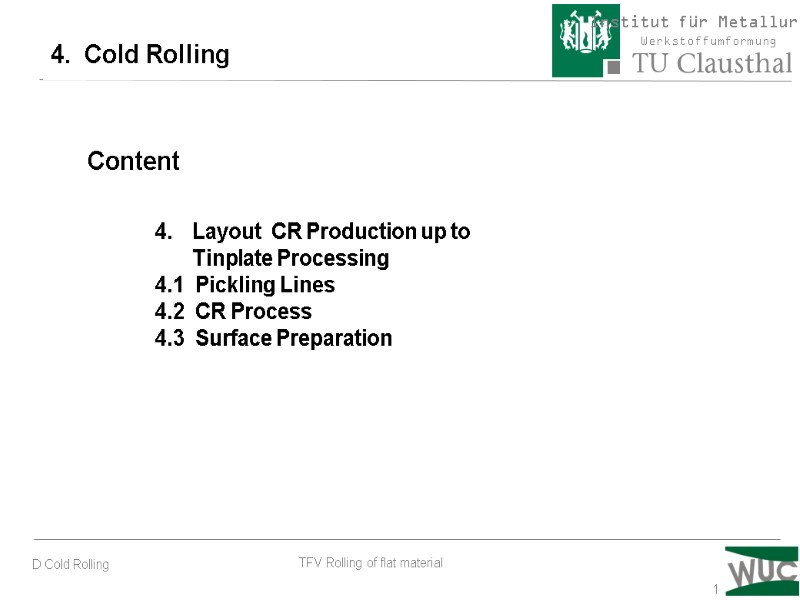
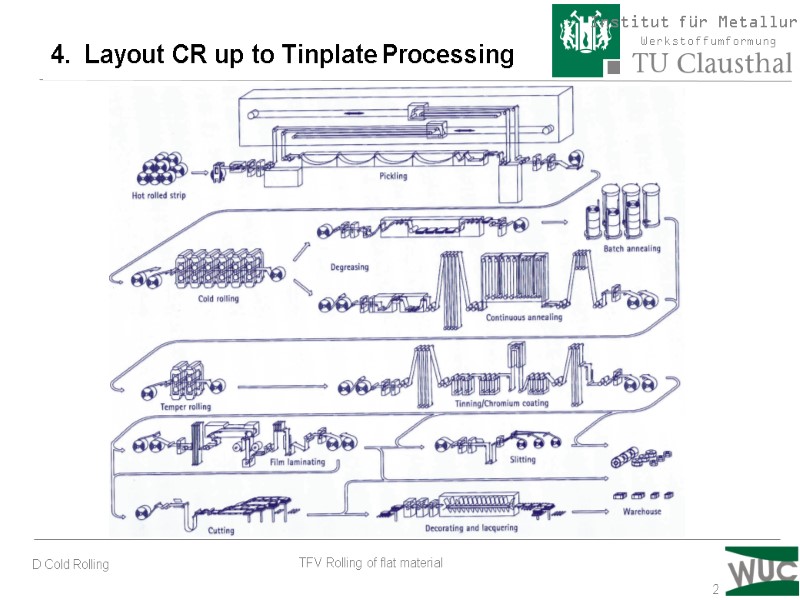
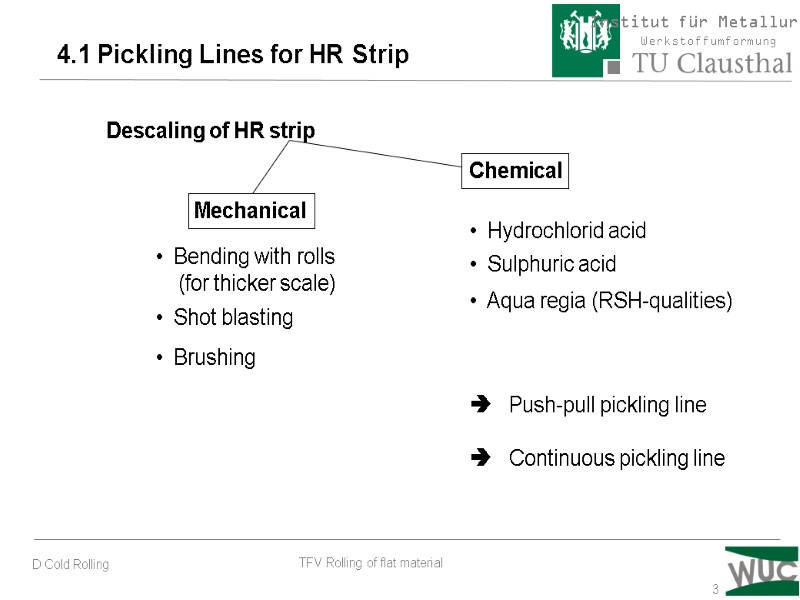
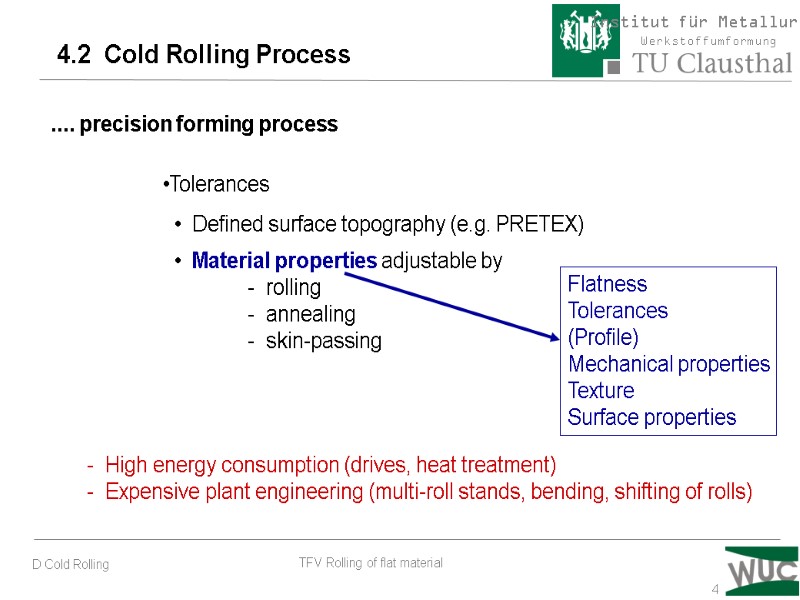
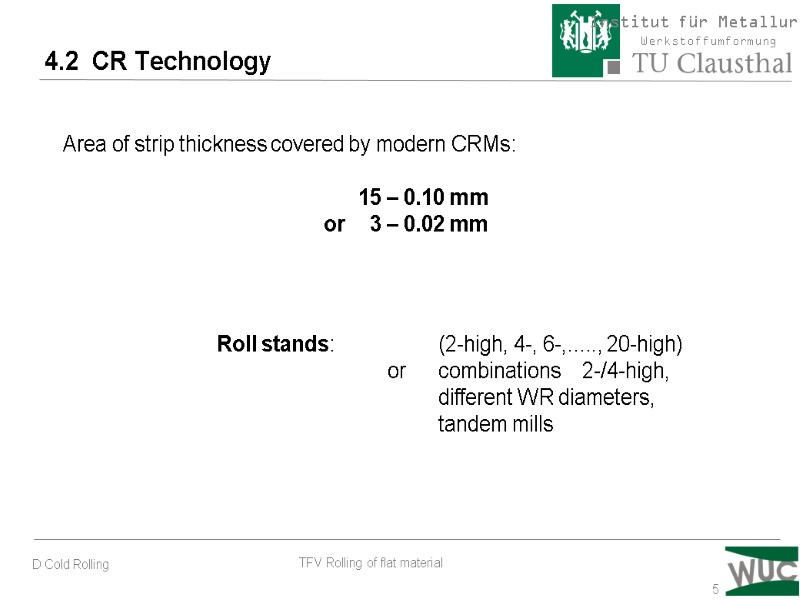
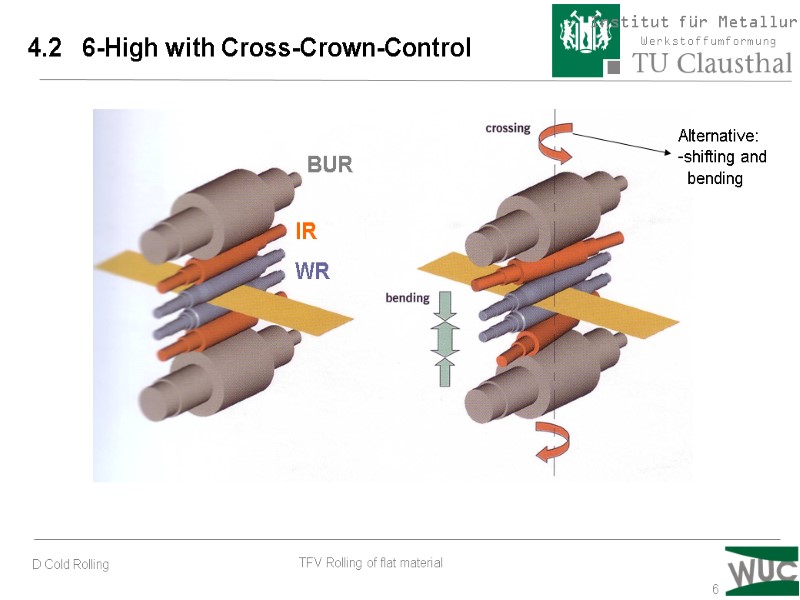
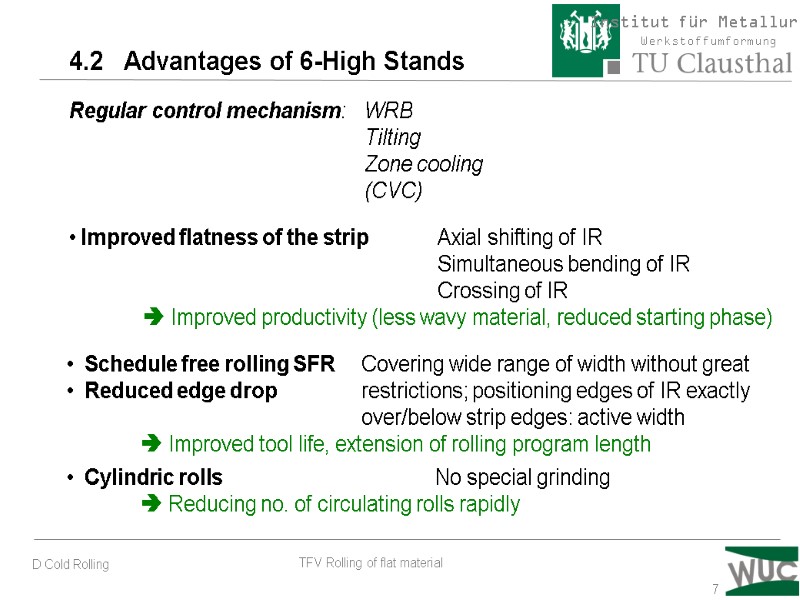
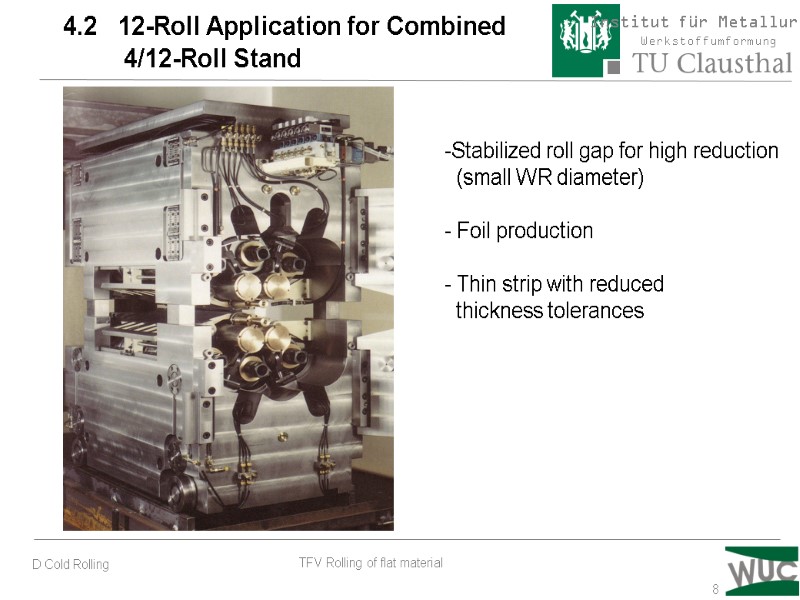
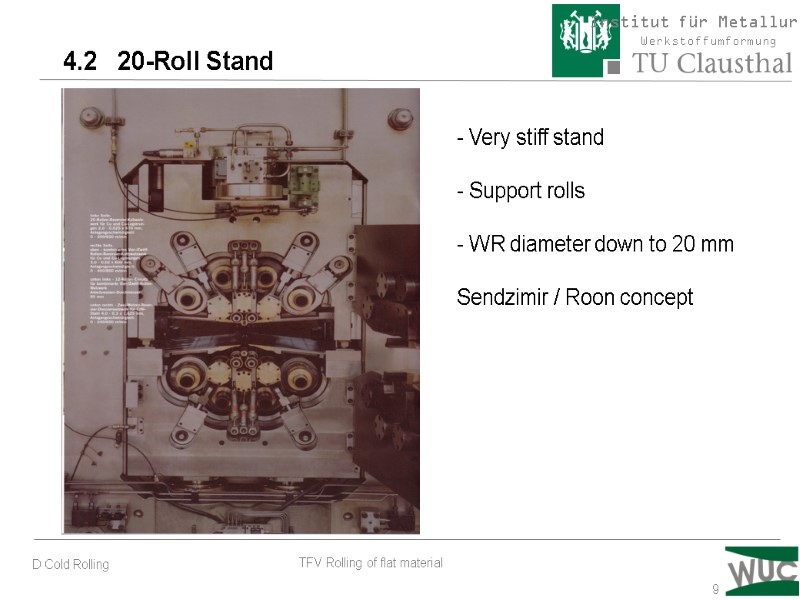
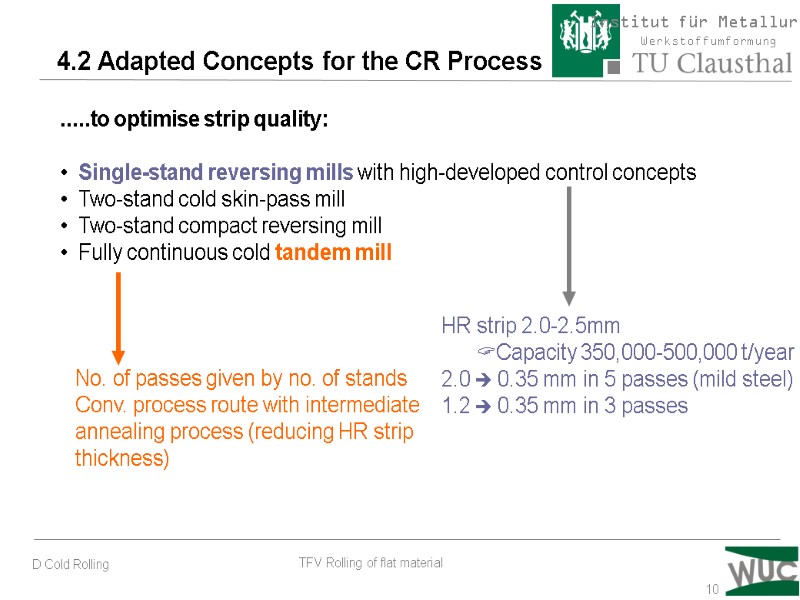
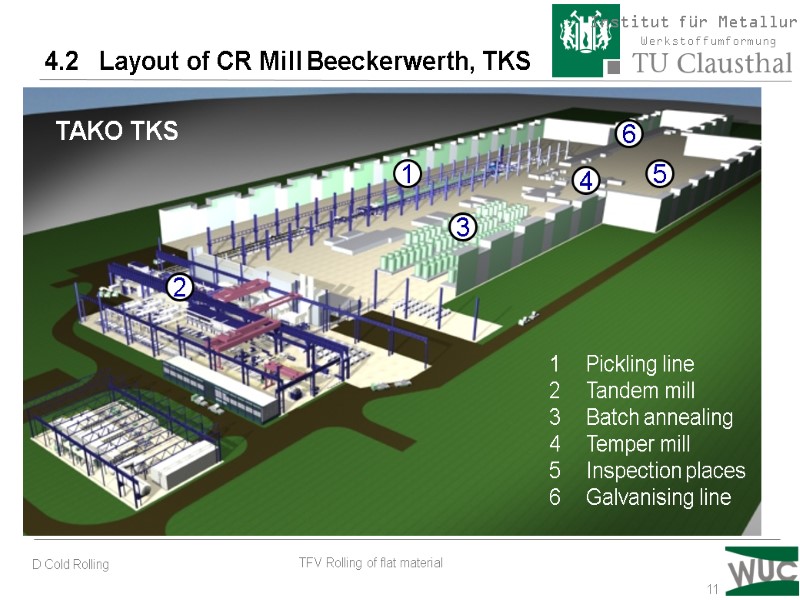
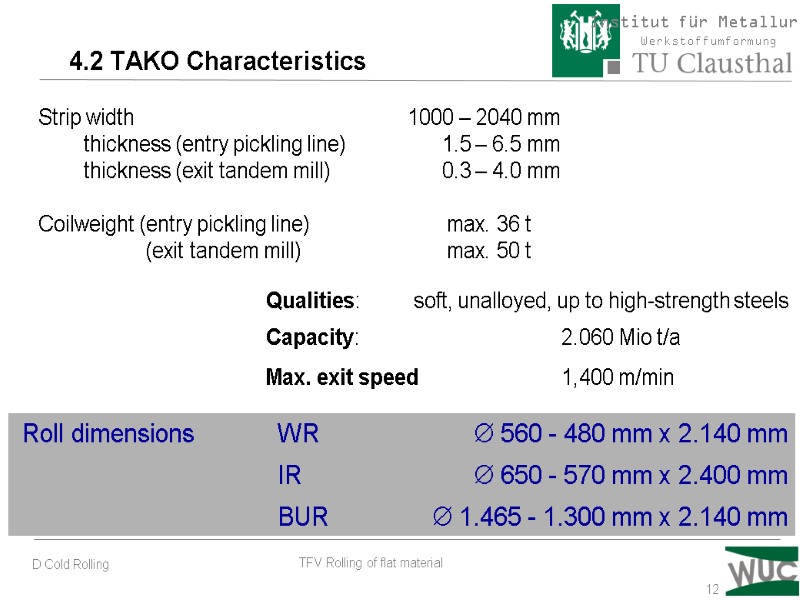
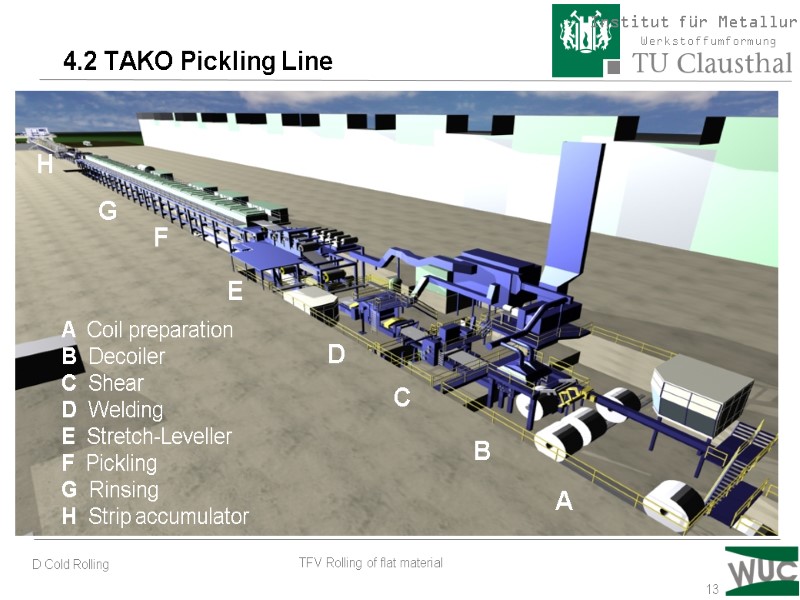
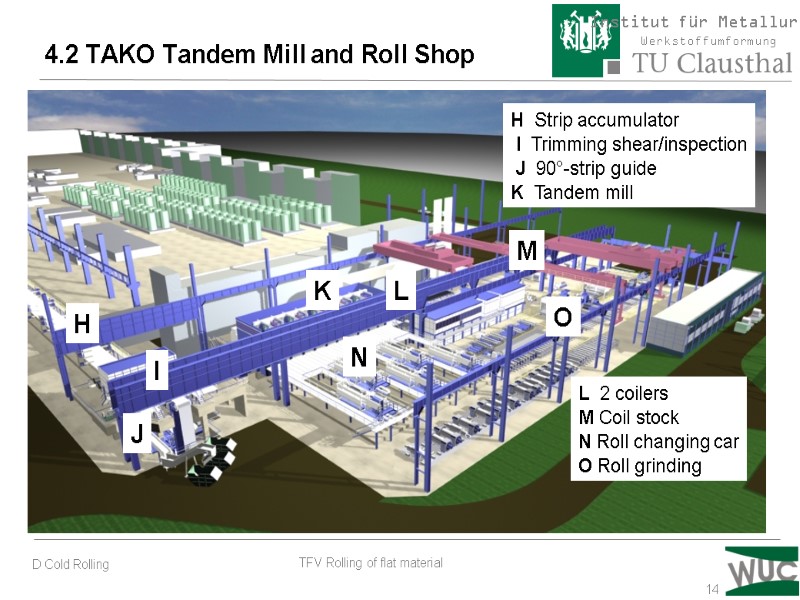
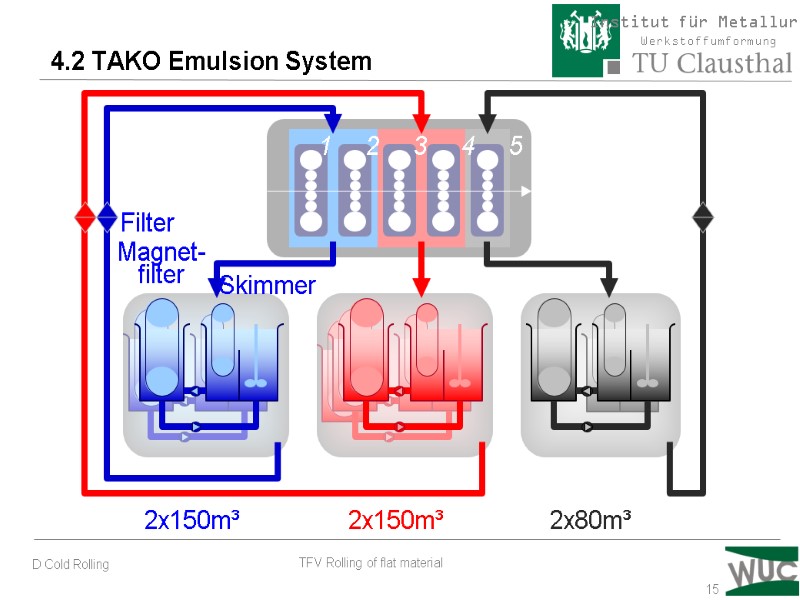
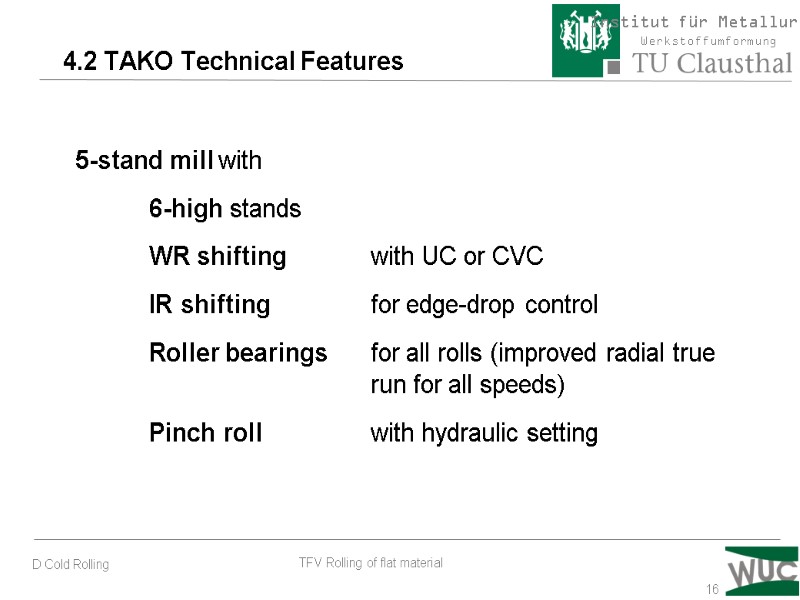
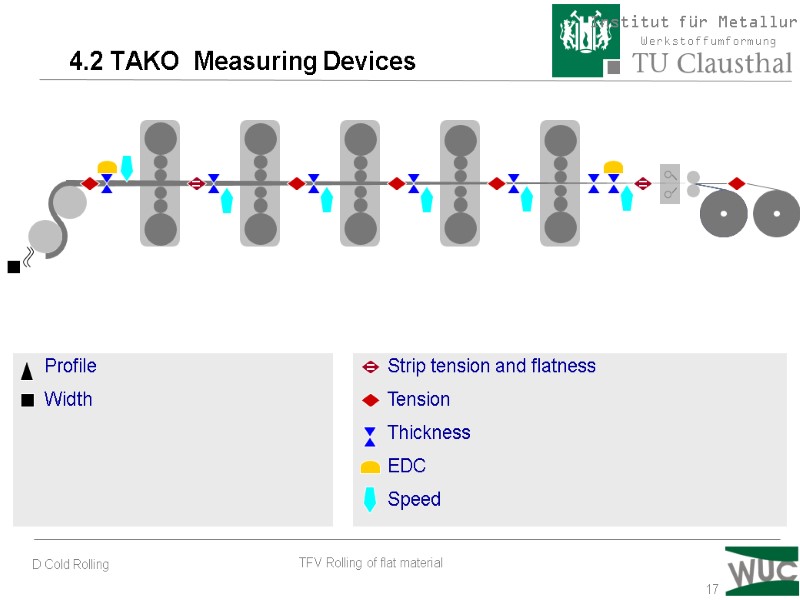



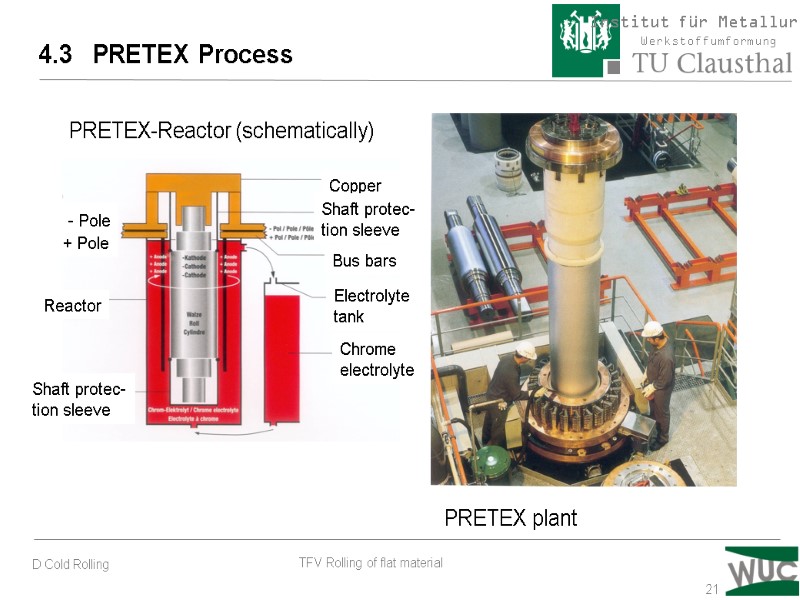
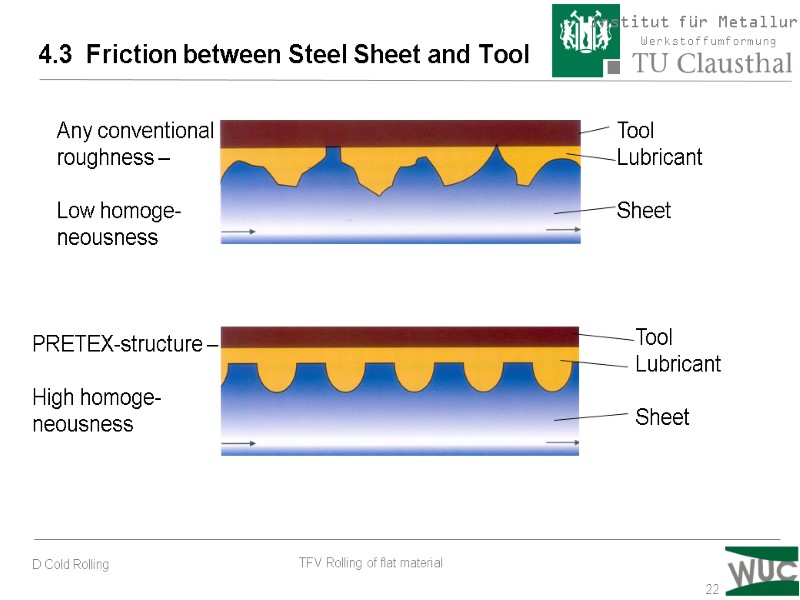
444-v_d_0704_cold_rolling.ppt
- Количество слайдов: 22
 1 Layout CR Production up to Tinplate Processing 4.1 Pickling Lines 4.2 CR Process 4.3 Surface Preparation Content 4. Cold Rolling
1 Layout CR Production up to Tinplate Processing 4.1 Pickling Lines 4.2 CR Process 4.3 Surface Preparation Content 4. Cold Rolling
 2 4. Layout CR up to Tinplate Processing
2 4. Layout CR up to Tinplate Processing
 3 4.1 Pickling Lines for HR Strip Descaling of HR strip Bending with rolls (for thicker scale) Shot blasting Brushing Hydrochlorid acid Sulphuric acid Aqua regia (RSH-qualities) Push-pull pickling line Continuous pickling line
3 4.1 Pickling Lines for HR Strip Descaling of HR strip Bending with rolls (for thicker scale) Shot blasting Brushing Hydrochlorid acid Sulphuric acid Aqua regia (RSH-qualities) Push-pull pickling line Continuous pickling line
 4 4.2 Cold Rolling Process .... precision forming process Tolerances Defined surface topography (e.g. PRETEX) Material properties adjustable by - rolling - annealing - skin-passing - High energy consumption (drives, heat treatment) - Expensive plant engineering (multi-roll stands, bending, shifting of rolls)
4 4.2 Cold Rolling Process .... precision forming process Tolerances Defined surface topography (e.g. PRETEX) Material properties adjustable by - rolling - annealing - skin-passing - High energy consumption (drives, heat treatment) - Expensive plant engineering (multi-roll stands, bending, shifting of rolls)
 5 4.2 CR Technology Area of strip thickness covered by modern CRMs: 15 – 0.10 mm or 3 – 0.02 mm Roll stands: (2-high, 4-, 6-,....., 20-high) or combinations 2-/4-high, different WR diameters, tandem mills
5 4.2 CR Technology Area of strip thickness covered by modern CRMs: 15 – 0.10 mm or 3 – 0.02 mm Roll stands: (2-high, 4-, 6-,....., 20-high) or combinations 2-/4-high, different WR diameters, tandem mills
 6 4.2 6-High with Cross-Crown-Control Alternative: -shifting and bending BUR IR WR
6 4.2 6-High with Cross-Crown-Control Alternative: -shifting and bending BUR IR WR
 7 4.2 Advantages of 6-High Stands Improved flatness of the strip Axial shifting of IR Simultaneous bending of IR Crossing of IR Improved productivity (less wavy material, reduced starting phase) Regular control mechanism: WRB Tilting Zone cooling (CVC) Schedule free rolling SFR Covering wide range of width without great Reduced edge drop restrictions; positioning edges of IR exactly over/below strip edges: active width Improved tool life, extension of rolling program length Cylindric rolls No special grinding Reducing no. of circulating rolls rapidly
7 4.2 Advantages of 6-High Stands Improved flatness of the strip Axial shifting of IR Simultaneous bending of IR Crossing of IR Improved productivity (less wavy material, reduced starting phase) Regular control mechanism: WRB Tilting Zone cooling (CVC) Schedule free rolling SFR Covering wide range of width without great Reduced edge drop restrictions; positioning edges of IR exactly over/below strip edges: active width Improved tool life, extension of rolling program length Cylindric rolls No special grinding Reducing no. of circulating rolls rapidly
 8 4.2 12-Roll Application for Combined 4/12-Roll Stand Stabilized roll gap for high reduction (small WR diameter) - Foil production - Thin strip with reduced thickness tolerances
8 4.2 12-Roll Application for Combined 4/12-Roll Stand Stabilized roll gap for high reduction (small WR diameter) - Foil production - Thin strip with reduced thickness tolerances
 9 4.2 20-Roll Stand - Very stiff stand - Support rolls - WR diameter down to 20 mm Sendzimir / Roon concept
9 4.2 20-Roll Stand - Very stiff stand - Support rolls - WR diameter down to 20 mm Sendzimir / Roon concept
 10 4.2 Adapted Concepts for the CR Process .....to optimise strip quality: Single-stand reversing mills with high-developed control concepts Two-stand cold skin-pass mill Two-stand compact reversing mill Fully continuous cold tandem mill
10 4.2 Adapted Concepts for the CR Process .....to optimise strip quality: Single-stand reversing mills with high-developed control concepts Two-stand cold skin-pass mill Two-stand compact reversing mill Fully continuous cold tandem mill
 11 1 Pickling line Tandem mill Batch annealing Temper mill Inspection places Galvanising line TAKO TKS 2 3 4 5 6 4.2 Layout of CR Mill Beeckerwerth, TKS
11 1 Pickling line Tandem mill Batch annealing Temper mill Inspection places Galvanising line TAKO TKS 2 3 4 5 6 4.2 Layout of CR Mill Beeckerwerth, TKS
 12 Strip width 1000 – 2040 mm thickness (entry pickling line) 1.5 – 6.5 mm thickness (exit tandem mill) 0.3 – 4.0 mm Coilweight (entry pickling line) max. 36 t (exit tandem mill) max. 50 t Qualities: soft, unalloyed, up to high-strength steels Capacity: 2.060 Mio t/a Max. exit speed 1,400 m/min 4.2 TAKO Characteristics
12 Strip width 1000 – 2040 mm thickness (entry pickling line) 1.5 – 6.5 mm thickness (exit tandem mill) 0.3 – 4.0 mm Coilweight (entry pickling line) max. 36 t (exit tandem mill) max. 50 t Qualities: soft, unalloyed, up to high-strength steels Capacity: 2.060 Mio t/a Max. exit speed 1,400 m/min 4.2 TAKO Characteristics
 13 H A Coil preparation B Decoiler C Shear D Welding E Stretch-Leveller F Pickling G Rinsing H Strip accumulator G F E D C A B 4.2 TAKO Pickling Line
13 H A Coil preparation B Decoiler C Shear D Welding E Stretch-Leveller F Pickling G Rinsing H Strip accumulator G F E D C A B 4.2 TAKO Pickling Line
 14 H Strip accumulator I Trimming shear/inspection J 90°-strip guide K Tandem mill H I J K L L 2 coilers M Coil stock N Roll changing car O Roll grinding M N O 4.2 TAKO Tandem Mill and Roll Shop
14 H Strip accumulator I Trimming shear/inspection J 90°-strip guide K Tandem mill H I J K L L 2 coilers M Coil stock N Roll changing car O Roll grinding M N O 4.2 TAKO Tandem Mill and Roll Shop
 15 4.2 TAKO Emulsion System
15 4.2 TAKO Emulsion System
 16 4.2 TAKO Technical Features 5-stand mill with 6-high stands WR shifting with UC or CVC IR shifting for edge-drop control Roller bearings for all rolls (improved radial true run for all speeds) Pinch roll with hydraulic setting
16 4.2 TAKO Technical Features 5-stand mill with 6-high stands WR shifting with UC or CVC IR shifting for edge-drop control Roller bearings for all rolls (improved radial true run for all speeds) Pinch roll with hydraulic setting
 17 4.2 TAKO Measuring Devices
17 4.2 TAKO Measuring Devices
 18 4.2 TAKO Limit Dimensions
18 4.2 TAKO Limit Dimensions
 19 PRETEX Shot Blasting 4.3 Topography of Rolls PRETEX / Conventional preparation
19 PRETEX Shot Blasting 4.3 Topography of Rolls PRETEX / Conventional preparation
 20 4.3 Surface Structure of Sheet Material roll structure SBT sheet structure PRETEX roll structure sheet structure electrolytically galvanized hot-dip 100 µm
20 4.3 Surface Structure of Sheet Material roll structure SBT sheet structure PRETEX roll structure sheet structure electrolytically galvanized hot-dip 100 µm
 21 4.3 PRETEX Process - Pole + Pole Reactor Shaft protec- tion sleeve Copper head Shaft protec- tion sleeve Bus bars Electrolyte tank Chrome electrolyte PRETEX plant PRETEX-Reactor (schematically)
21 4.3 PRETEX Process - Pole + Pole Reactor Shaft protec- tion sleeve Copper head Shaft protec- tion sleeve Bus bars Electrolyte tank Chrome electrolyte PRETEX plant PRETEX-Reactor (schematically)
 22 Tool Lubricant Sheet Tool Lubricant Sheet Any conventional roughness – Low homoge- neousness PRETEX-structure – High homoge- neousness 4.3 Friction between Steel Sheet and Tool
22 Tool Lubricant Sheet Tool Lubricant Sheet Any conventional roughness – Low homoge- neousness PRETEX-structure – High homoge- neousness 4.3 Friction between Steel Sheet and Tool

